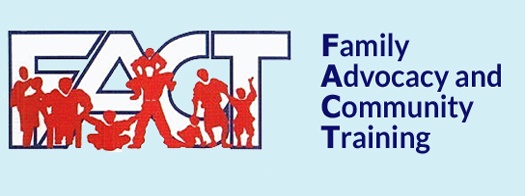
My name is Heather Lytle and I work for a non-profit organization called F.A.C.T.
F.A.C.T. staff work to support families that include a person with a disability using a peer mentor approach. We are required by various funders to record all of our activities in a comprehensive manner which is one of the reasons we chose FAMCARE as our database.
FAMCare Keeps Up With Our Organization's Needs
We have used FAMCARE since the beginning of 2014. As we have grown as an organization, our FAMCARE database has grown as well. I might even say that having a database that can progress in the same fashion as an agency progresses is vitally important. I wouldn’t have known to even think such a thing when we first started using FAMCARE. I did not know then that we wouldn’t just continue in the same fashion, using an unmodified version of the system we purchased. Luckily, perhaps, the last three years have been rampant with change in my organization and even better than luck, FAMCARE has been able to keep up with us.
Going from paper to an electronic system opens you up to a new world of workflow and productivity!
One important step we took was to switch from paper forms to electronic forms. This may appear to be a simple process, and as far as the electronic creation of the forms as well as the ability for staff to access those forms, it is. The difficulty is in the details you can’t see. For instance, a staff member might not notice that they inadvertently entered the same day and time twice for two different activities. They aren’t able to see all of their activities for different customers at the same time without specifically running a report for that information. A staff member going about their daily business isn’t going to be running reports to ensure that they haven’t accidentally duplicated their time. An example of what I’m talking about would be that if I see the Smith family on Tuesday at 2:00 pm and then the Lewis family on Wednesday at 2:00 pm, it is possible (due to human error) for me to enter the date incorrectly claiming that both of those activities happened on Tuesday at 2:00 pm. This would then mean that I had two different activities taking place at the same time. Clearly this is unacceptable as a person can’t be in two different places at once, and no one could convince a funder otherwise, except perhaps H.G. Wells who doesn’t work at F.A.C.T.
What is even more complicated is that we have three different activity times associated with one family visit because we have to separate any travel time to and from a customer’s house, from the actual time spent with a customer. Having three different activities for every home visit just increases the odds of human error and time duplication. In an effort to remedy this possibility of human error, I spoke to my handy FAMCARE contact, explained my problem, and they built into my system a measure to prevent this from happening. Any time a staff member uses the same time more than once they get an error that tells them which customer has the duplicative time indicated, along with a link to change the conflicting time at once.
FAMCare helps us prevent errors and saves us time.
As an administrator I no longer have to spend time running reports to ensure that there are no duplicative time entries, or go back to staff to tell them that they have to correct the issue, or lose out on funding because I’ve had to choose one activity over another because we were past the ability to make changes to the activity. This is just one example of my life becoming easier because of something FAMCARE was able to build into my system.

